
- For PC
- For MAC
- For Linux
- OS: Windows 10 (64 bit)
- Processor: Dual-Core 2.2 GHz
- Memory: 4GB
- Video Card: DirectX 11 level video card: AMD Radeon 77XX / NVIDIA GeForce GTX 660. The minimum supported resolution for the game is 720p.
- Network: Broadband Internet connection
- Hard Drive: 22.1 GB (Minimal client)
- OS: Windows 10/11 (64 bit)
- Processor: Intel Core i5 or Ryzen 5 3600 and better
- Memory: 16 GB and more
- Video Card: DirectX 11 level video card or higher and drivers: Nvidia GeForce 1060 and higher, Radeon RX 570 and higher
- Network: Broadband Internet connection
- Hard Drive: 62.2 GB (Full client)
- OS: Mac OS Big Sur 11.0 or newer
- Processor: Core i5, minimum 2.2GHz (Intel Xeon is not supported)
- Memory: 6 GB
- Video Card: Intel Iris Pro 5200 (Mac), or analog from AMD/Nvidia for Mac. Minimum supported resolution for the game is 720p with Metal support.
- Network: Broadband Internet connection
- Hard Drive: 22.1 GB (Minimal client)
- OS: Mac OS Big Sur 11.0 or newer
- Processor: Core i7 (Intel Xeon is not supported)
- Memory: 8 GB
- Video Card: Radeon Vega II or higher with Metal support.
- Network: Broadband Internet connection
- Hard Drive: 62.2 GB (Full client)
- OS: Most modern 64bit Linux distributions
- Processor: Dual-Core 2.4 GHz
- Memory: 4 GB
- Video Card: NVIDIA 660 with latest proprietary drivers (not older than 6 months) / similar AMD with latest proprietary drivers (not older than 6 months; the minimum supported resolution for the game is 720p) with Vulkan support.
- Network: Broadband Internet connection
- Hard Drive: 22.1 GB (Minimal client)
- OS: Ubuntu 20.04 64bit
- Processor: Intel Core i7
- Memory: 16 GB
- Video Card: NVIDIA 1060 with latest proprietary drivers (not older than 6 months) / similar AMD (Radeon RX 570) with latest proprietary drivers (not older than 6 months) with Vulkan support.
- Network: Broadband Internet connection
- Hard Drive: 62.2 GB (Full client)
Rank VII
With the release of the upcoming War Thunder update Red Skies, we are introducing a new top rank VII for aviation to group up the more advanced aircraft in the game, both new and already existing in the game. We are also expanding the battle ratings to 11.0 for this branch. These changes will make top ranking battles more balanced, and will allow us to add new aircraft with superior fight and combat characteristics. The planned changes to the rank positioning of the existing top tier aviation can be seen in the list below.
- F-4E Phantom II
— moved from rank VI to VII - A-7D
— moved after AV-8C from rank VI to VII - MiG-21MF
— moved from rank VI to VII - MiG-21SMT
— moved from rank VI to VII - MiG-21bis
— moved from rank VI to VII - Su-17M2
— moved from rank VI to VII
- Yak-38
— moved from rank V to VI - Phantom FGR.2
— moved from rank VI to VII - Phantom FG.1
— moved from rank VI to VII - Harrier GR1
— moved from rank V to VI - AV-8A
— moved from rank V to VI - F-4EJ Phantom II
— moved from rank VI to VII
- F-104G
— moved from rank VI to VII - F-5A
— moved from rank VI to VII - Mirage IIIC
— moved from rank VI to VII - Mirage IIIE
— moved from rank VI to VII - J35D
— moved from rank VI to VII - F-4F Early
— moved from rank VI to VII
MiG-23M, jet fighter, USSR, rank VII
Pros
- The best maximum speed in the game
- Infrared search-and-track
- Long range R-23T missiles
Cons
- Limited number of weapon suspension points
Work on a new tactical fighter, the MiG-23, began in 1961, simultaneously with the release of the first production versions of the MiG-21. The requirements for this type of jet fighter were constantly changing, but the main idea was to create a faster and better armed fighter than the MiG-21, while being able to take off and land on shorter airfields. The priority goals for the project were higher speed, rate of climb and flight range. “Dog fighting” air combat in direct contact with the enemy was no longer considered as a regular scenario.Thus, the requirements for airframe durability were significantly reduced to lower the aircraft’s weight. To achieve the ability of operating on short runways, TsAGI engineers proposed a scheme with a variable sweep wing - the MiG-23 had three wing positions for different flight modes.
The first serial MiG-23 with 9.300 kgf engines went into production in 1969. This first MiG-23S demonstrated difficulties on takeoff and landing, the aircraft very quickly showed a lack in modern radar and navigation systems, and there was also a requirement in the use of new weapons. In 1974, a MiG-23M modification appeared - with a more powerful engine, new wing mechanization, significantly improved on-board equipment and new weapons. This modification became the basis for several fighter modernization programs, the machine was in service with the Soviet Air Force and was actively supplied abroad designated as MiG-23MF with simplified on-board radio-electronic equipment.
Today, on the anniversary of the first flight of the MiG-23 series, we’re proud to announce a legendary aircraft in War Thunder. The MiG-23M will become one of the first rank VII aircraft and the fastest fighter in the game at the time of its release into the game, marginally surpassing the American Phantom II and British Lightning in maximum speed. The MiG-23M has a variable sweep wing with three positions, the fighter's power plant is one Khachaturov/Tumansky P29-300 engine with a static thrust with the afterburner of 11.500 kgf. The aircraft has a maximum speed of Mach 2.4 (this is about 2,500 kph), while maintaining controllability and decent maneuverability throughout the entire speed range.
In addition to the excellent flight characteristics, the Soviet fighter boasts a good selection of guided and unguided weapons, as well as specialized equipment for the efficient use of its arsenal. In addition to the usual bombs and rockets, here we have the Kh-23M air-to-surface guided missiles, already familiar to our pilots from the Yak-38 series, as well as several types of air-to-air guided missiles, including the maneuverable R-60, the new R-23R with its radar homing head and and the R-23T with a thermal seeker. The MiG-23M infrared search-and-track device is capable of capturing the thermal signature of an operating engine from an enemy aircraft at a very large distance and covertly launching a missile without alarming any enemy radar warning system. The suspended armament is complemented by the GSh-23L twin autocannon with 200 rounds.
Compared to the Phantom II - perhaps the main opponent of the MiG-23 - the Soviet fighter has fewer weapon suspension points and, due to the wing design, all of them are located on the fuselage and centre section. The payload of the MiG is also inferior to the American fighter, although it cannot be called too little. The advantages of the MiG-23 are its higher maximum speed and R-23T missiles with a lengthy launch distance. The Phantom however, has more weapons, a better climb rate and greater speed at low altitudes. Well, let's see who will hold the War Thunder skies!
MiG-23M and other rank VII aircraft will be waiting for you in hangars with the "Red Skies" update quite soon. Stay tuned to our news!
The War Thunder Team
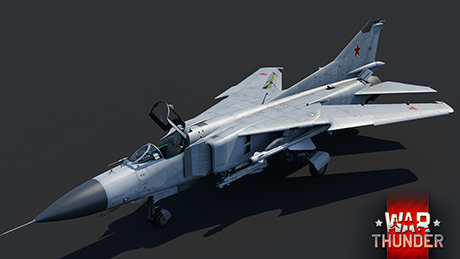
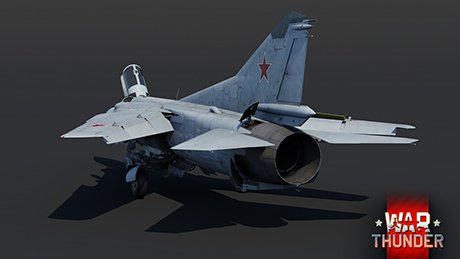
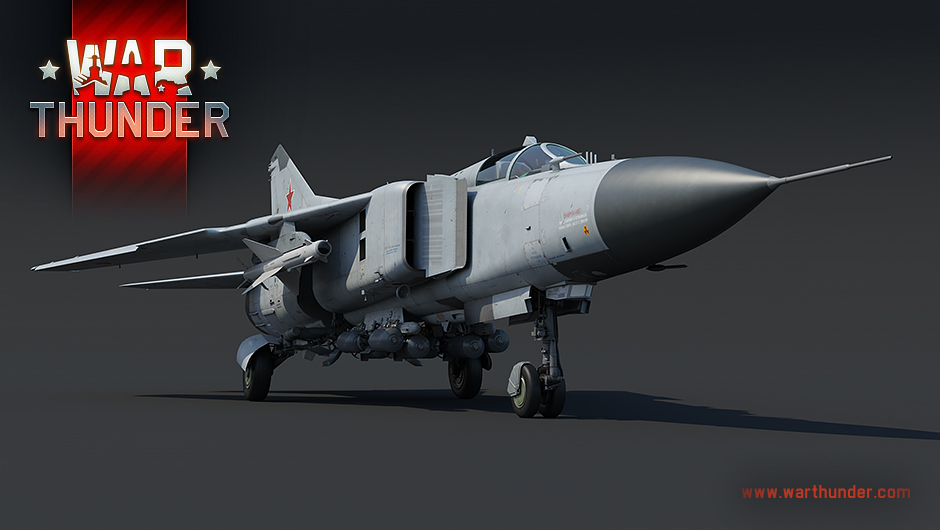
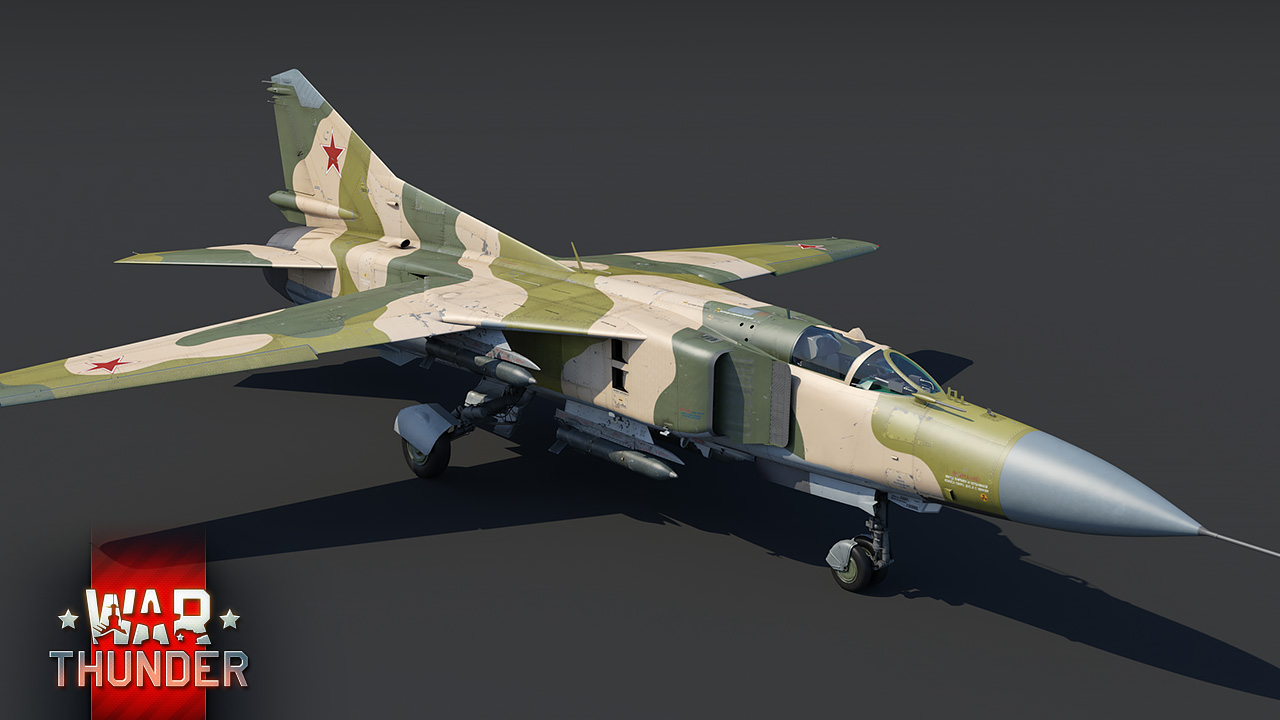
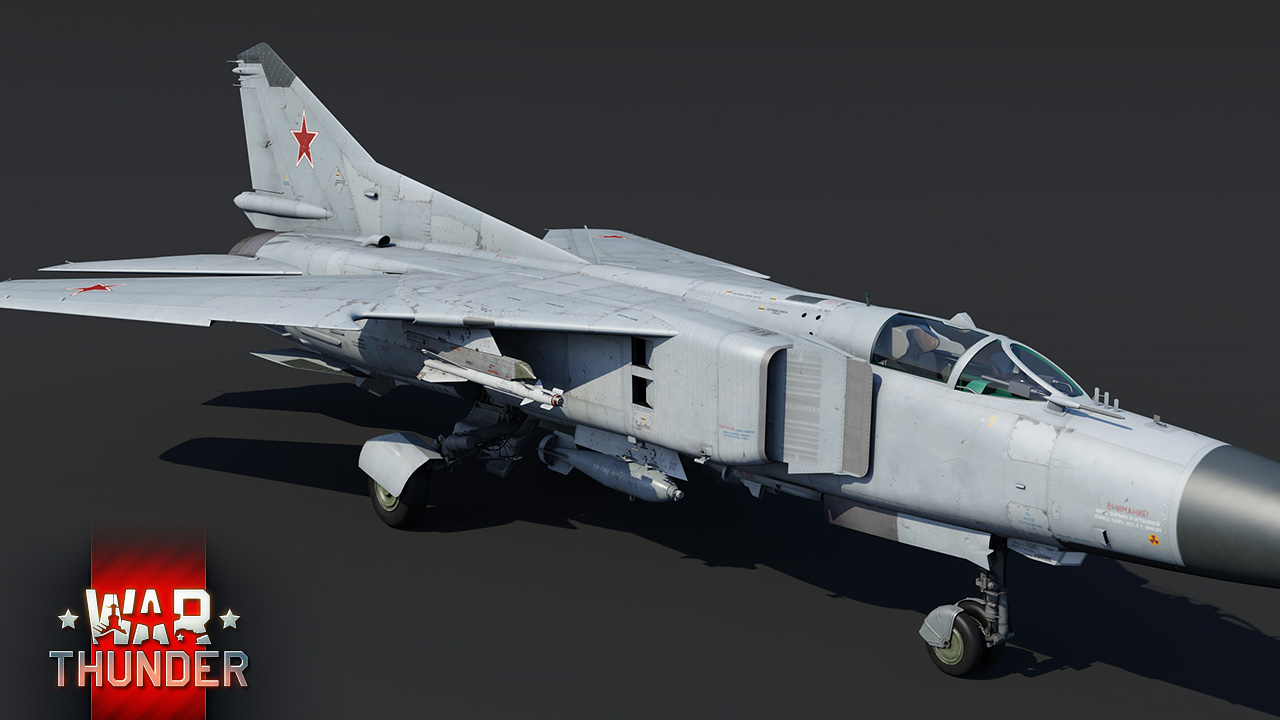
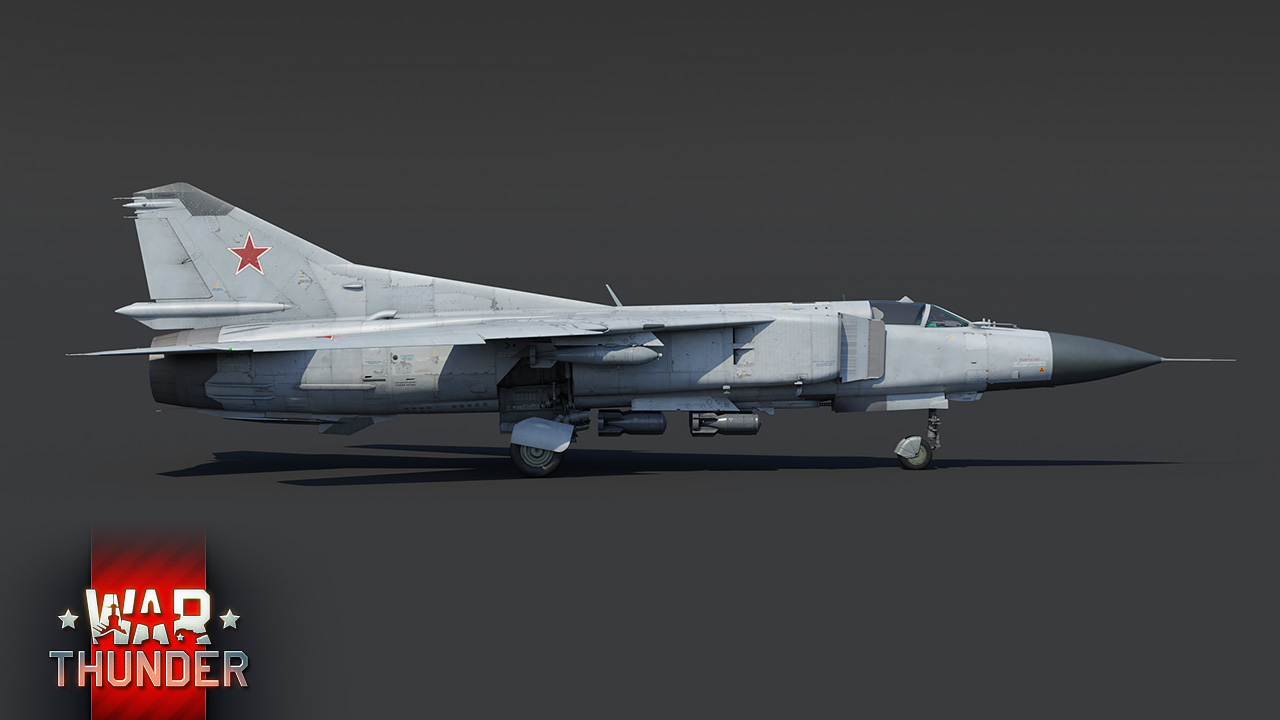
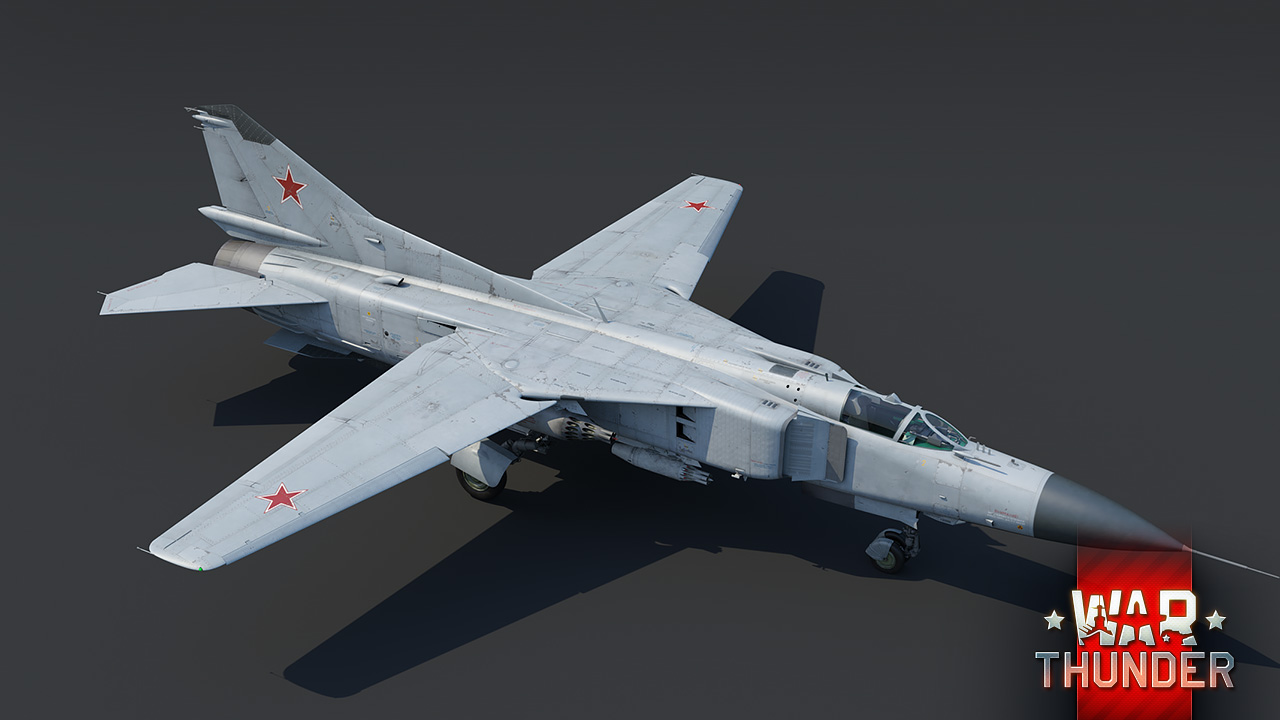

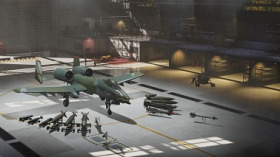
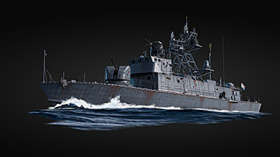
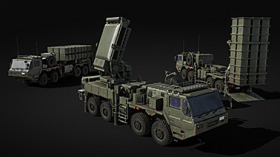
Comments (267)
nyoooooom
Mmmm noice
THANK YOU VERY VERY VERY MUCH GAIJIN :)))))))))))) I REALLY APPRECIATE IT MANN!!!!! KEEP UP YOUR GOOD WORKS AND I WISH THE BEST FOR ALL OF YOU :)))))))))))))))))))))) I still hope for the MiG-23MLA in the future, but nevertheless we got the M now. Thx again :))
nah, MLD next :D
Yaay. Cant wait to play this in simulator battles
feel the spam
So we're getting the aircraft designed to beat the F-14 & F-15 before the F-14 or F-15. Not only that but we're getting the more advanced "M" that first flew years after both the Eagle and the Tomcat.
you funny one. The MiG-23 was never meant to fight the F15. It was built with the F4 in mind. The F14 flew 3 years after the MiG-23 and in combat, the F14 reck the 23. In the Iran Irak war, no MiG23 shot down F14 but a lot of them destroyed 23s.
haha funi joke, the mig 23 was made to counter/kind of copy the f4 phantom, that's like saying a phantom should go against an f14. sure it might be able to compete but they are not equal.
How much will the RP and SL costs change?
Thank you for finally adding the Mig-23!! Though I wonder why you picked the M variant first. The first good model I guess? Surprised me that you're giving it PKVP-23 flare dispensers, I'd really like the source for that. Also from the stream the R-23 missile is missing 4g (should be 20g not 16) and you forgot to add the R-13M1. Other than that thanks a lot. I'm pleasantly surprised you're implementing its IRST.
Balamce yemms
I wanna see that mig with him gunpods
Submit a complaint